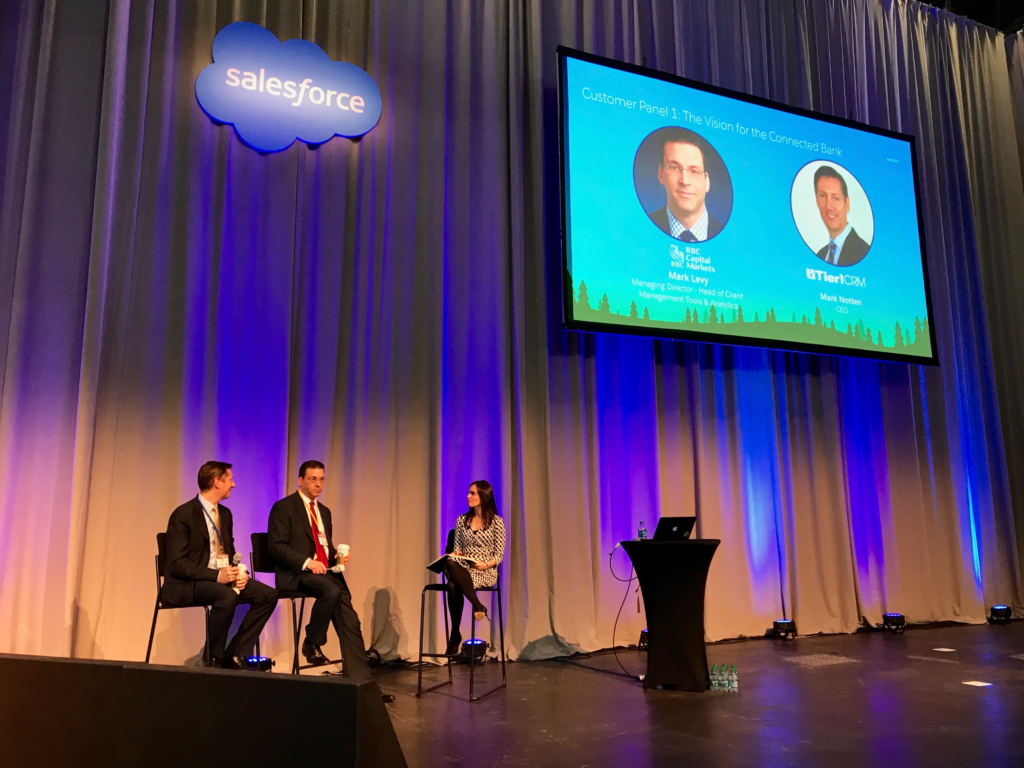New York, June 24, 2021
By Mark Levy, Financial Cloud Transformation
Key Takeaways
Buy- and Sell- Side Capital Markets organizations (including Corporate & Investment Banking, Prime Brokerage, Trading, etc.) require flexible, process enabling building blocks to assist in their digital transformation journeys. Those building blocks must be easily “plugged into” both existing and future solutions and infrastructure.
- There are now emerging products that can facilitate, streamline, and better secure document creation and management lifecycles across markets, banking, and research processes.
- All the above enables financial service firms to better serve and satisfy their customers, substantially lower expenses, and avoid costly regulatory missteps
- One such product is called Side Drawer, whose capabilities are highlighted in this article
Overview
As buy- and sell- side firms engaged in capital markets businesses continue their digital transformation journey, they require building blocks that can address specific use cases, particularly those that facilitate superior client management, lower costs, and meet regulatory challenges. Two such common processes are:
- Electronic document lifecycle management, and
- Secure digital storage and access management.
These processes pose challenges both across silos – such as on-boarding, and client lifecycle management, as well as those specific to Banking (Corporate Banking, Investment Banking and Municipal Finance), Trading (all asset classes including derivatives), Research, Prime Brokerage, Asset Management, Private Equity and Venture Capital.
A new FinTech provider has hit the market with a platform that easily integrates with and enhances workflow solutions to solve for document intensive processes that can easily be secured for access shared internally and externally (with customers, partners, and vendors). “SideDrawer”, the name of the product and company (www.SideDrawer.com), is currently solving problems in the wealth management, mortgage and insurance spaces and is now providing solutions for Capital Markets.


Product Capabilities
SideDrawer delivers on the essentials of document lifecycle management with a highly customizable framework to request, capture, secure, approve, share, store, retrieve, retain, and destroy electronic documents associated with Capital Markets processes.
Capabilities include setting up complex approval structures based on multiple parameters and reminders that certain documents are awaiting next steps. Capital Markets “document refresh” challenges can be facilitated with these delivered capabilities – with notifications set up for 1, 2 or 3 or more years out depending on the refresh cycle.
Powerful APIs – A key differentiator is their focus on interoperability – SideDrawer marketing materials and presentations focus attention on their APIs, created with flexibility and ubiquity in mind. The objective is to be able to effectively use SideDrawer as both a platform to solve specific workflow situations or to easily plug into an existing solution or framework to solve for missing capabilities. If a solution exists for document creation and monitoring, but a powerful and highly secure storage feature is needed, SideDrawer APIs facilitate easy integration. Ali Qureshi, a Co-Founder, and the Chief Revenue Officer uses the term “document orchestration” to describe SideDrawer’s management of the movement of documents across multiple systems.
Signature Processing – Another example of interoperability is signature processing. SideDrawer comes delivered with an API for DocuSign, as well as its own digital signature management capability that can be enabled. SideDrawer is continuously partnering with and developing APIs into other leading vendors including Customer Relationship Management solutions (CRMs), Deal Management vendors and various communication and collaboration products.
Integration Capabilities – Another key building block of SideDrawer’s integration capability is its ability to seamlessly utilize an organization’s existing reference data or taxonomies such as client reference data, CRM data, deal numbering, etc. This can be combined with extensive tagging capabilities to make searching and retrieval far more effective than other document storage solutions. Documents can be entitled so that they are easily shared, or their existence is known but not accessible, or completely hidden unless the individual searching has the proper permissioning.
Attestation – Regulators, clients, internal and external auditors may require evidence of source for various documents. Current digital files can easily be tampered with and therefore do not offer a dependable level of integrity of authenticity. Through SideDrawer, any document can be provided a digital certificate that establishes the authenticity of the document, the date of production, the source, with the certificate validating its unaltered state.
Digital Vault – SideDrawer also delivers a highly secure storage capability or “digital vault”. This solution combines leading cyber security safeguards with an ability to empower end users to share collaboratively with customers, colleagues, partners, and vendors. This sharing can be easily enabled, disabled, and monitored by end-users, Compliance personnel, business management, etc. These capabilities facilitate solving for several the use cases outlined in the “Use Cases for Capital Markets” section.
Process Enablement – Another powerful feature is the document request process where the solution can interact with clients, vendors, etc., directly and make it easy to submit documents. Misdirected email is the leading cause of data breaches at large enterprises. With SideDrawer, these submissions can be configured for the appropriate tagging and then kick off internal workflows such as alerting the back-office team that the client has provided a particular artefact. SideDrawer workflow capabilities can also be used with existing storage when sharing documentation outside the organization, facilitating additional automation and a single interface to external users.
Data Residency – SideDrawer’s agnostic use of the cloud (including AWS and Azure) allows them to satisfy many of the existing and emerging global data residency requirements that impact financial services. There are numerous local, regional, and multi-national privacy regulations, beyond the very visible GDPR, that are barriers to global expansion for growing businesses or satisfactory compliance for existing multinational firms. These privacy and data storage regulations are expanding (i.e., California Consumer Privacy Act (CCPA), Virginia’s Consumer Data Protection Act (CDPA)). SideDrawer facilitates policy-based data residency driven by regulatory requirements (e.g., European client data stored in Europe and U.S. client data stored in the U.S.).
Private Cloud Deployment Options – Some firms have compliance requirements necessitating that 3rd party solutions handling sensitive information be installed entirely within that firm’s private cloud infrastructure and remain under their own management and upgrade control. This deployment option is also supported by SideDrawer.


Use Cases for Capital Markets
Onboarding – Onboarding clients is a universal challenge in financial services. It also presents an outstanding opportunity to increase client satisfaction, expedite revenue realization and lower costs. According to Chris Rigg, a Capital Markets Lead for Sutherland Global, and former Bank of America executive, “There is a material value to expediting revenue or rejecting the client out right”. Both banking deals and securities trading opportunities can be highly time sensitive. Industry insiders have countless examples of incomplete documentation and processing resulting in client dissatisfaction and lost trades. According to one investment banking industry executive, “We do have KYC, but people don’t know where the documents are.”
Many financial service organizations have begun a journey to addressing these challenges, but no single solution seems to be meeting all of everyone’s needs. SideDrawer provides an opportunity to enhance their solution with electronic document lifecycle management capabilities and secure digital storage and access management. Enhancements include easily sharing document processing internally (with Legal, Credit, Compliance, front office authorized signatories, etc.) and externally with partners and the myriad of client personnel necessary for completing the process.
Further from Chris Rigg:
Financial institutions including banks, can no longer afford to spend time with every customer to onboard them. They need to adopt a Google-like model where they do less personal interaction with customers but instead allow them to be facilitated through technology”.
Managing Document Lifecycles – The onboarding process is the first step in the client lifecycle process, and the corresponding document lifecycle process. In today’s environment, to maintain customer satisfaction, control costs and avoid regulatory missteps, financial institutions need a robust system for document maintenance. Trading agreements, credit agreements, ISDAs, OMS / EMS contracts, counterparty payment agreements, etc., all require regular revision due to a myriad of factors including regulatory pronouncements, contract expiration and new business opportunities with existing clients but in different geographies or with additional products or services not covered under the original agreement.
Anecdotes across the industry include needing to “re-paper” legal agreements done originally in another language with a client’s legal entity that no longer exists and transacting with a legal entity off an agreement done “years ago” that turns out not to cover it. These revisions need to be facilitated across legal entities, departments, and with external personnel.
Managing Material & Non-Public Information – The various banking related disciplines share many common document management requirements related to material & non-public information, document sharing needs across divisional silos and functions (Compliance, Finance, Legal), sharing with outside partners (law firms, other financial institutions, etc.), sharing with client personnel, and the immediate need to enable and restrict document access for all the above depending on where they are in the process. Document types include pitch books, NDAs, contracts, and deal sheets.
At many of these banking firms, restricted access to these various documents requires a ticket to the IT help desk with various levels of approval. This can and does result in frequent access delays, and other problems such as lost drive access, provisioning the wrong person, etc. Some of these not so infrequent problems can result in substantial regulatory fines. SideDrawer offers a solution where access can be pre-configured and enabled in the front office, by Compliance or by Business Management, with a greater level of scrutiny and oversight. Integrating these capabilities with an existing deal management or CRM solution can add significant value to processes such as pitch book development. These capabilities can also facilitate the management of tree situations where competing deal teams require strict separation but could be collapsed into each other over time. SideDrawer also enables access to be securely shared with the requisite client personnel with the same level of scrutiny and oversight.
Bridging Institutional Silos – An interesting data sharing challenge can arise related to certain international institutions domiciled outside of the U.S. but with a U.S. presence. For example, Japanese financial services firms are, by design, very siloed in Japan. In the U.S., clients look for more of a “single face to the customer” approach, and if you elect bank holding company status in the U.S., you are required to operate in many ways as a single entity. SideDrawer can easily bridge the short-term infrastructure gap and be part of a longer-term infrastructure improvement to enable digital sharing.
Facilitating the Exchange of Confidential Information – SideDrawer can be employed to quickly streamline and secure a variety of processes involving the exchange of confidential information. For example, despite the existence of budgeting and HR systems, the famous “Comp” (compensation) process is typically handled at some point of its lifecycle in spreadsheets. These spreadsheets are emailed back and forth as numbers are worked out and revised. Every year mistakes are made, and the wrong file is attached, or the correct file is sent to the wrong individual (despite passwords sent in a separate email). SideDrawer would eliminate much of the risk associated with these types of exchange as well as continuous confusion over versioning, creating a “single source of the truth”.
There are limitless areas to employ SideDrawer to solve for the exchange of confidential information, including: procurement processing, NDAs shared with clients, vendors, consultants, and partners, third party payment arrangements for customers, delivering trade recaps and special reporting for clients. Many firms employ some level of a “Creative Services “type group to standardize, enhance and upgrade client presentations and pitches, which can also involve material & non-public information. This service can easily be facilitated and secured with this solution.
Increasing Client Satisfaction, Expediting Revenue and Reducing Risks – There are powerful implications of increasing client satisfaction, expediting revenue and simultaneously easing the burden of document access while reducing the risk of inappropriate access. There are additional benefits of integrating these capabilities with existing solutions such as onboarding, customer relationship management and deal management to increase usage (a.k.a., make them sticky).
Conclusion
A solution that solves for electronic document lifecycle management and secure digital storage and access management can be applied to a myriad of Capital Markets use cases that exist both within silos and across the enterprise. SideDrawer presents a compelling solution for solving use cases targeting niche process needs, anywhere documents require a management process, easily searchable meta data and highly secure document sharing internally and/or externally.
Today, financial institutions must solve for many of these use cases in house and at great cost – if they are being addressed at all. Advantages of purchasing this type of solution include time to market, built in best practices, continuous innovation, and professional support. An innovative technology that can drive process improvement and agility throughout an organization and its business interactions, is an essential building block in any digital transformation journey.
—
About the Author
Mark Levy is a Managing Partner with Financial Cloud Transformation, a management consulting firm focused on transformation in the financial services and fintech industries. Mark has worked in leadership roles in digital transformation including at RBC Capital Markets, Morgan Stanley and Ernst & Young. He has also worked as an independent consultant to Fortune 100 corporations as well as start-up companies. https://www.linkedin.com/in/mark-levy-seniorexec/


Mark Notten, Mark Levy and Laurén Robbins at Salesforce City Tour, New York